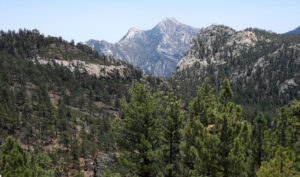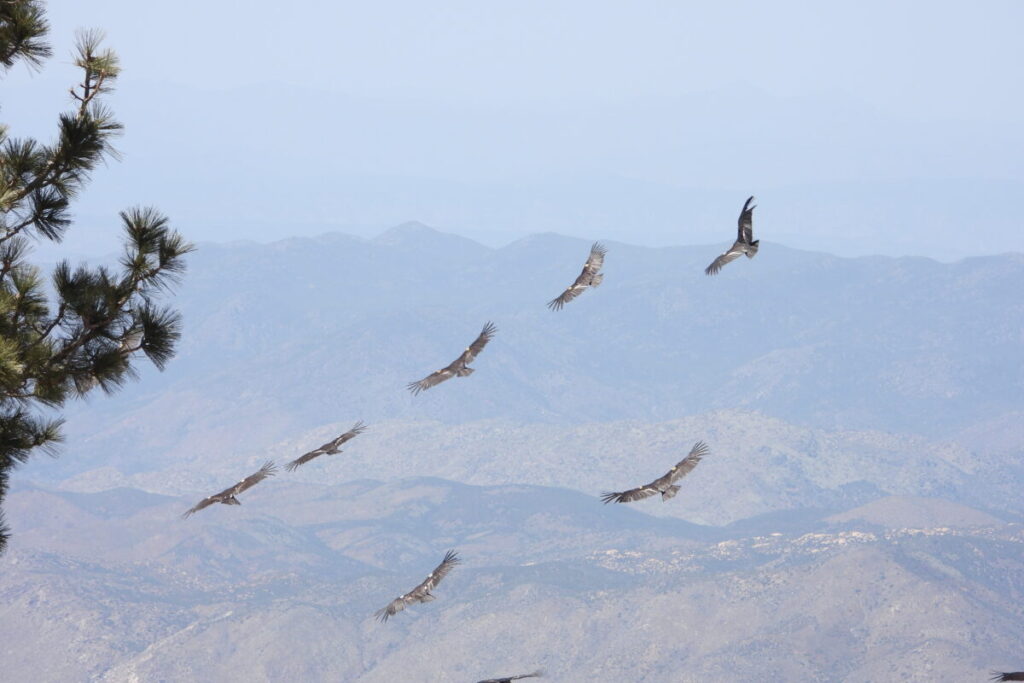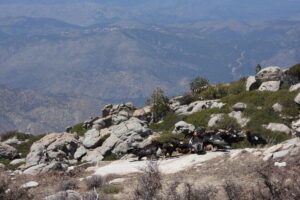Surrounded by hot and dry lowlands, the San Pedro Mártir mountain range is a mountain range located in the central part of the state of Baja California that thanks to binational efforts between Mexico y United States has become the paradise of the California condor.
With pine forests and elevations reaching 3,000 meters, this site of more than 700 km2 offers a perfect refuge for the conservation of the largest bird in North America and other species that inhabit the place, since being surrounded by desert areas gives them physical isolation.
Because it is home to important forest reserves and species such as the puma, wildcat, bighorn sheep, coyote, badger and fox, among many others, on April 26, 1947, it was declared as Natural Protected Area and the Sierra de San Pedro Mártir National Park.

With its outstretched wings reaching up to 3 meters, for thousands of years, the California condor It was flying the skies over an area extending from British Columbia, Canada, to Baja California, Mexico.
Due to hunting, lead poisoning from eating the meat of animals killed by hunting or by ingesting deliberately poisoned animals, such as coyotes, by 1983 there were an estimated 25 California condors left in the United States. In Mexico they had already been extinct since 1939, notes an article in Mongabay.
Therefore, a binational effort was initiated between Mexico and the United States to ensure the survival of this species. recovery and conservation program which years later began to show results, with the birth of offspring.
In 2002, the reintroduction of the California condor to the San Pedro Mártir mountain range with six specimens that had been bred in captivity. The condors were introduced into an aviary to begin a process of adaptation to the wild, with the work and supervision of specialized biologists such as José Licona Hernández, Juan José Vargas Velasco y Catalina Porras Peña.
You can read: 6 critically endangered California condors released in San Pedro Mártir sierra
Before they are released, they are fitted with a GPS chip and a telemetry radio in their wings to monitor where they are moving and where they are in real time.
"With the two systems we are locating the areas where they move, where they sleep, what they eat, if they find wild food, if they integrate into the group. All this technology is very important and if we didn't have this we wouldn't be able to know what is going on," Juan Vargas told Mongabay.
The California condor restoration and conservation program The results are showing, because from 25 specimens 40 years ago, there are now more than 560, of which 45 inhabit the San Pedro Mártir mountain rangewhich has become Mexico's paradise for North America's largest bird over the past two decades.
The experiences of these efforts made in Mexico for the conservation of this species, which ceased to exist in the country more than six decades ago, will be narrated by Juan Vargas y Catalina Porras in the The case of the Californian Condor in the Sierra de San Pedro Mártiras part of the Summit 2023 Prosperity: A Possible Purposeof Sea of Cortez Forumwhich will be held on November 8, 9 and 10 in Los Cabos, Baja California Sur.
Source: Mongabay



